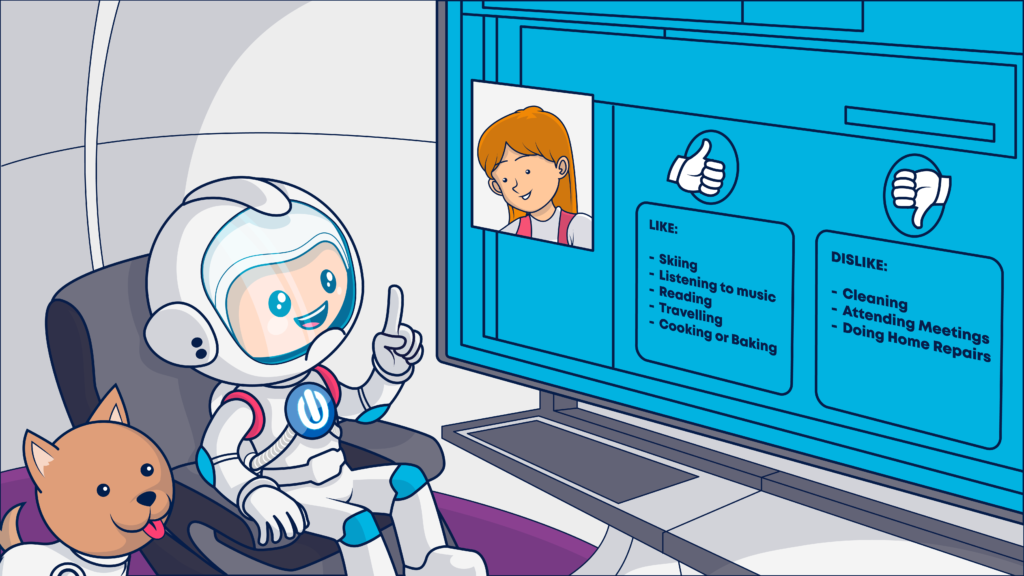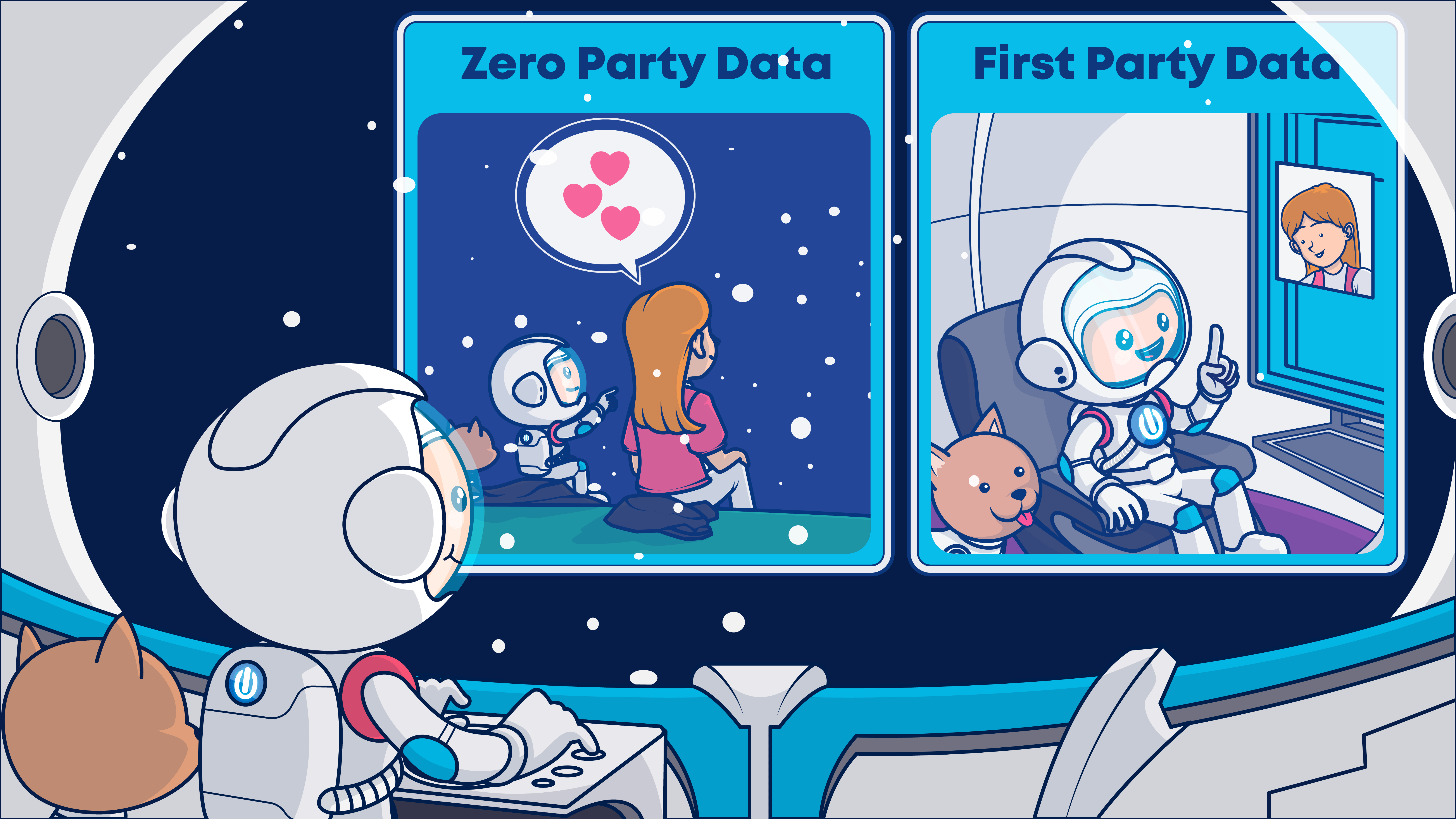Gathering data is a crucial part of marketing. Once you have it, connecting with your customers and increasing conversions becomes much easier. In today’s world, getting data directly from consumers has become more important than ever. But what’s the difference between zero-party data and first-party data? Read on to find out.
But what’s the difference between zero-party data and first-party data? Read on to find out.

The data businesses collect about their clients, leads, and customers goes by many names, including zero- and first-party data.
While the terms are sometimes used interchangeably, the two data categories are not identical. The differences between first- and zero-party data can be subtle.
However, understanding those differences enables marketers to assess the value, reliability and best uses of the consumer data they possess.
How are these two categories of data different?
First-party data is related to the subject of the information and comes from observation of them. The amount a customer spends on a seller’s website is first-party data that seller may collect. Zero-party data is information provided directly from a person (the subject of the information).
If a consumer responds to a survey by stating that they spend $20 per month on a specific seller’s website, they have provided the survey publisher with zero-party data about themselves.
A more common example of zero-party data is the name, email address and other identifying information a customer provides to a business to complete a transaction or receive some benefit.
When someone completes an email subscription sign-up form, the data they input is zero-party data. If the website owner then uses this identifying information to track and record the person’s actions on the website, they are collecting first-party data.
How do businesses categorize and differentiate the data they gather about contacts and customers?

Businesses categorize the data they collect about leads and customers based on how they obtained that data, from whom and with what level of consent from the subject.
For example, third-party data is information that a business purchases or obtains by some other method from a “third-party,” a non-related organization or business entity. This information may be aggregated and anonymized or relate to an individual.
Some data brokers access public data from multiple sources such as census reports and combine it with information obtained from other private organizations or their own research, then repackage it to sell to brands seeking insights into a particular market or market segment. As you can imagine, the final purchasers of the information are pretty far removed from the source.
Second-party data isn’t quite as distant from its subject. Second-party data is sometimes purchased and often exchanged under a partnership or similar agreement. For example, a mortgage comparison website may collect information from its website visitors, then share that information with participating mortgage companies.
First- and zero-party data are so-named because their link to the data’s source is close. An organization’s first- and zero-party data consists of the information it has collected about the customer itself. First- and zero-party data is information that your customer shared with your business in some way–either by telling you or allowing you to observe it.
That “or” is what determines whether the resulting information is categorized as first- or zero-party data.
Why do businesses need to distinguish between first- and zero-party data
Zero-party data, also known as customer-first or explicit data, wasn’t always a thing. Before Forrester Research used the phrase “zero-party data” to distinguish between disclosed and discovered information, all data derived from the customer as the source was first-party data.
Back then, the divisions were simple:
From the customer to you = first-party data
From the customer to another business to you = second-party data
From the customer to many other businesses, thrown into a blender, redistributed and repacked and delivered to you = third-party data
So why did Forrester and organizations begin using this new category to describe some of the information brands obtain from consumers?
Because even though the source is the same for zero- and first-party data, the means of attainment and the level of customer awareness and consent for its acquisition are not.
Here’s the new division of customer-first data:
First-party data = Information a company obtains through observing someone’s behavior.
Zero-party data = Information a company obtains as a result of the subject’s intentional choice to volunteer that information.
Examples of first- vs. zero-party data and where it comes from

If I visit a job search website and begin scrolling through the various listings and click on several posts for executive assistant roles located in the US Pacific Northwest, the job search website can connect this behavior to my customer profile (assuming they can uniquely identify me when I make my visit). Those behavioral data points are first-party data.
If I visit the same website and create a custom search by selecting executive assistant roles located in the US Pacific Northwest from a menu of options or typing in search terms, then I’ve provided the organization with the same information in the form of zero-party data.
I intentionally shared my job interests with the website.
Relying on first-party data alone can cause brands to miss the mark sometime. That’s why many organizations emphasize the need to gather zero-party data whenever possible.
Zero-party data isn’t limited to the information a customer plugs into a product finder or uses to create a saved search, though. The information your email subscribers enter in your preference center about how often they want to be contacted and what types of communications they want to receive fits the definition of zero-party data, too.
If, on the other hand, you use an algorithm to deduce based on a subscriber’s engagement rates that they’d prefer to hear from your brand less often or only receive discounts and other promotional offers–you’ve gathered first-party data.
💡 You need to be able to link data to a unique customer identifier to use it for personalization and to build your customer profiles. But that doesn’t mean that the data you gather will always be personally identifiable information (PII). That’s a term used to describe specific types of data. Information such as time on page or items browsed, isn’t PII but is useful for brands trying to get to know individual customers better.
What difference does it make whether your data is zero- or first-party?

Zero- and first-party data, supplemented with other data sources to fill in the gaps, can give you a deeper, more accurate understanding of your customer’s likes and dislikes. This improves your ability to provide them with relevant, personalized communications, recommendations and offers. That’s a winning play!
So why does it matter how your data is defined and whether someone directly told you what they like or want or you deduced it from their behavior?
The creepiness factor.
Studies indicate that the majority of customers don’t mind telling you personal information as long as there is something in it for them. However, they don’t like it when you use information they didn’t give you or in ways they believe are unethical.
When you act on observational (first-party) data, your customers may believe you got the information from a third-party or that you’ve been spying on them without their consent.
Zero-party’s advantage over first-party data is in removing these suspicions. Data that falls in the zero-party category is obtained through the consumer’s explicit consent and intent to share the information with you.
You aren’t creeping about watching them without their knowledge and then using what you’ve observed.
Zero-party data is a direct exchange: You ask, the customer answers.
Of course, questions of consent and awareness can still be a problem if you don’t make your intentions clear when asking for information. In the new era of consumer-led data management, transparency and permission are the keys to success.














